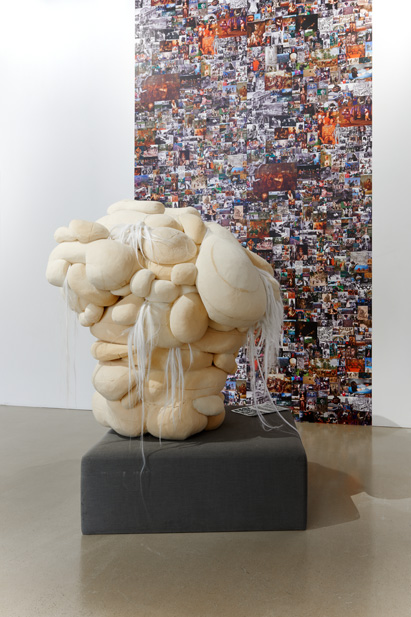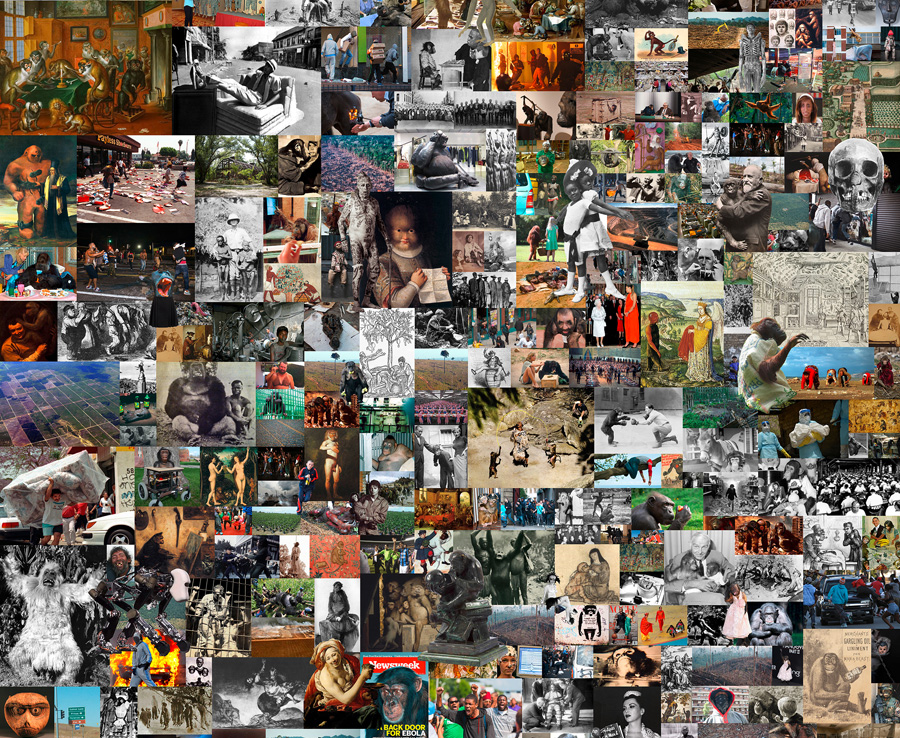deutsch | english |
SOCIAL GLITCH
Radical aesthetics and the consequences of extreme events
Curated by: Sylvia Eckermann, Gerald Nestler, Maximilian Thoman
An exhibition project at KUNSTRAUM NIEDEROESTERREICH 25 09 - 05 12 2015
and in the public space of Vienna with projects in collaboration with TONSPUR Kunstverein Wien and WUK.performing.arts
| WORKS | NEXT > Earth Sensing Association / Nabil Ahmed (GB) |
INES DOUJAK & JOHN BARKER (AT/GB)
|
|
Ines Doujak, 06 Kriminalaffe, 2015, exhibition view, photo: Andi Diem |
INES DOUJAK & JOHN BARKER (AT/GB)
06 Kriminalaffe, 2015 Wallpaper / cloth design, sculpture (foam, hair), essay, performance. Ines Doujak with John Barker and Matthew Hyland
The fundamental question is why are things as they are?! Paradise was lost, the woman's fault by all accounts. Until then there had been no need to work for the happy couple, the fruit of the trees satisfied all their wants. Since then only lazy scoundrels like the ape have got away with not working, hunter gathers without a care in the world, and only bothering to hunt when little effort was required. In captivity they have learned to sing for their supper; in zoos by refraining from beating their brains out on the bars of the cage; in experimental stations like that of Gestalt co-founder Wolfgang Köhler's experimental station by having to use all their ingenuity to get the food they needed. Workers under capitalism, described by the first managerial scientist as "intelligent gorillas" have always had their ingenuity captured and used in the interests of capital accumulation masquerading as efficiency. But this ingenuity must always be curtailed lest it be used to break out of the cage and make a life without masters. Curtailment has involved strategies such as divisive racism –using the image of the stupid and threatening ape, and the withdrawal of the means of survival to the most people of the world. Like the apes in experimental stations, the aim is to allow no time for that basic question, Why Are Things As They Are? |
Ines Doujak, 06 Kriminalaffe, 2015, wallpaper, detail |
|

